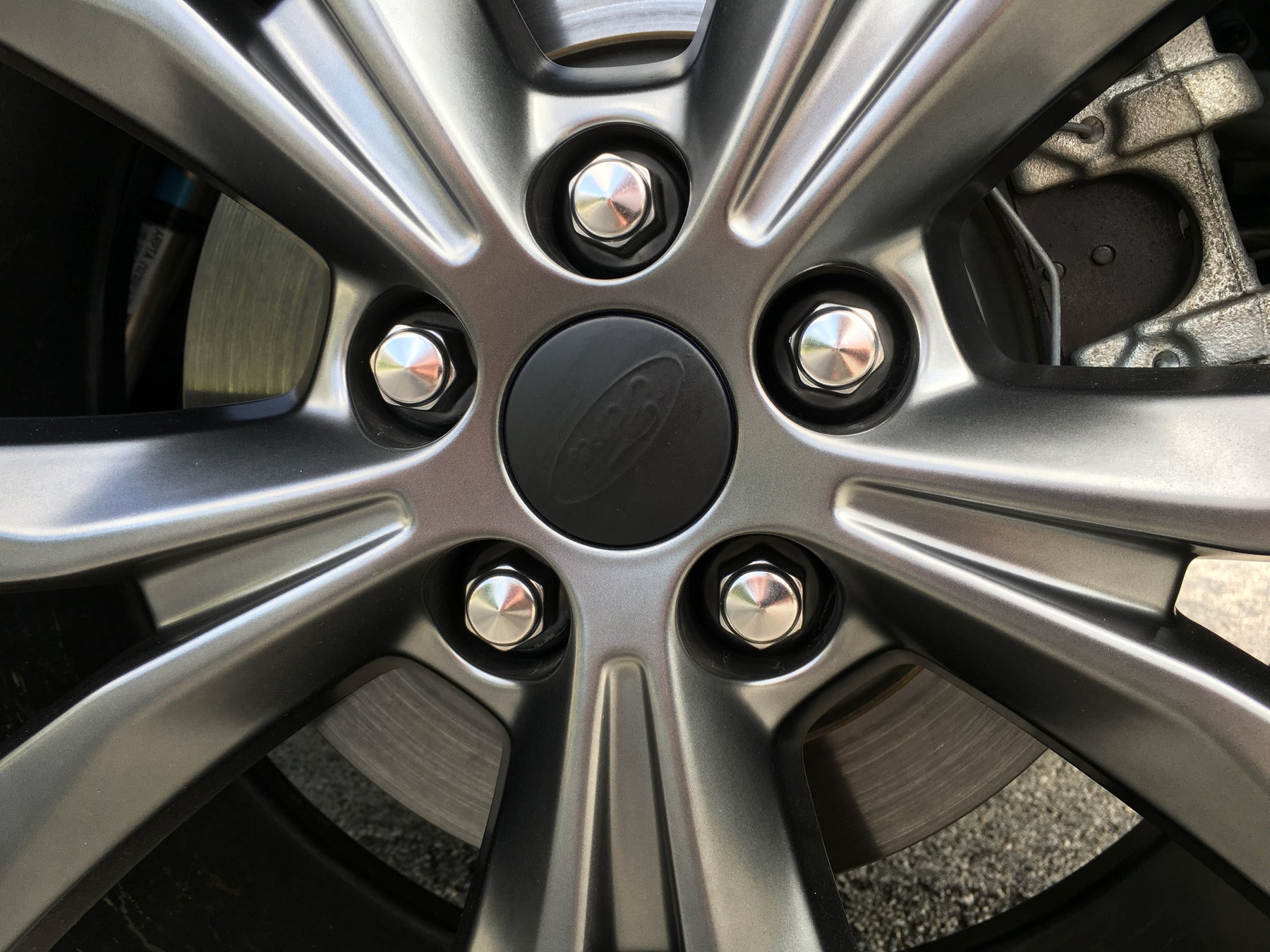
Installing Ford Fusion Center Cap Decals
WEATHER WARNING
The temperature that you install your decals in is the most critical element. Temperatures must be between 50°F to 90°F.
The weather that the decals are exposed to cannot go below 60 degrees for 5-6 days. This is due to the water used during the install. The time is needed to allow the water between the decal and emblem to completely evaporate. There may be bubbles in your decal until the water has fully evaporated.
For more details about proper temperatures and weather conditions, click here.
Note: Your Center Cap Decal Kit includes two extra decals. If this is your first time feel free to test the process with one of these extra decals.
Clean Your Center Caps
Thoroughly clean the surface of the center cap with warm soapy water.
After the center caps are dry wipe the center cap with the included alcohol prep pads to remove any remaining grease or grime.
Align The Decal
Start by lining up one end of the decal at the outer area of your center cap and then use the edge of the center cap as your reference to install the edge of the decal.
Gentle Stretch Into Place
Make sure to pull the decal firmly, yet delicately, during the install. This will help to eliminate bubbles and/or creases.
Remove Any Bubbles
Use a soft, lint-free, cloth applied over your finger to work out bubbles. Work your way from the center of the decal to the outer edges of the decal. This will make the bubble removing process easier.
Heat Up Decals (Carbon Fiber Version)
For carbon fiber version you will need to heat up the decals with a heat gun or hair dyer to fully activate the adhesive and get proper adhesion to the rounded edges of the center cap.
After installed in place heat up the decals until warm to the touch and then press the carbon fiber vinyl into place over the curved edges of the center cap.
Remove Any Stubborn Bubbles
If you have tiny bubbles after the install you can take a very sharp item, such as an x-acto knife, and poke a tiny hole in the bubble. Then gently work out the area bubble through the hole.
